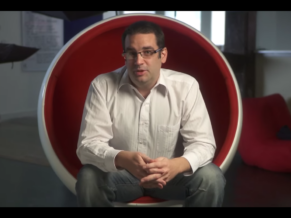In a recent piece for Edudemic, I explored six ways that students can collaborate with iPads. As a follow up, I thought I would share a few other methods by which students can collaborate, some possible now, some coming down the road. A pattern is emerging in my perspective on iPad use in the classroom...find ways to collaborate with these devices.
TimelineJS
In my last blog post I outlined a method by which students can collaborate in real time on a google form to create a web based timeline. The entire process is outlined here. What I like most about this method of collaboration is that once the timeline is published through the TimelineJS site, when any future updates are made to the google spreadsheet, the timeline updates in real time.
Here is a sample timeline that was created collaboratively in an iPad workshop I ran recently at Needham High School.
NOTE - We learned a few valuable tips during this collaboration session:
- Events can be entered on the spreadsheet out of order
- Any blank rows on the spreadsheet need to be removed for all content to display on the web timeline.
Collusion
In terms of collaboration on iPads, this is exactly what I want to be able to do. Collusion describes their product, "A major innovation for the iPad – think of it as google docs for pens – free-form, cloud-based, real-time collaboration… very cool, and incredibly useful."
While collaboration through Google Drive is outstanding, watching the ease in which students could collaborate on a document or workspace with this resource is intriguing. The Collusion app is already available in the app store, but using the app requires both a collusion pen and an account. While there are only two comments in the iTunes store that are less than promising, I am hopeful that this resource can work out some bugs in future updates. Check out the Collusion video below from their Kickstarter campaign to get a sense of what is possible with this tool.
TogetherLearn (Spin)
I met the team from Spin at the iPad Summit in Boston last year, and I was instantly blown away by the thoughtful design of their app and their vision for collaborative viewing of video through the iPad. If you haven't used LearnTogether yet, the app is available for free in the app store. Once your account is setup, you can begin a gathering by selecting one of the videos currently available through the app.
At this point you have access to YouTube videos from: Associated Press, C-Span, Harvard, MIT, PBS, Stanford, NASA, Khan and National Geographic. Once a gathering is created, you can invite your friends with TogetherLearn accounts to join in and watch the video. Along with TogetherLearn, Spin offers another app, TogetherTalks that focuses exclusively on TED content. To get a sense of the experience while using TogetherLearn, check out their help page for a few videos. My hope is that eventually all videos on YouTube will be available through the app or that a teacher could make their YouTube channel with curated content available to their students.
>>> Greg also published this article on his History 2.0 Classroom blog.

